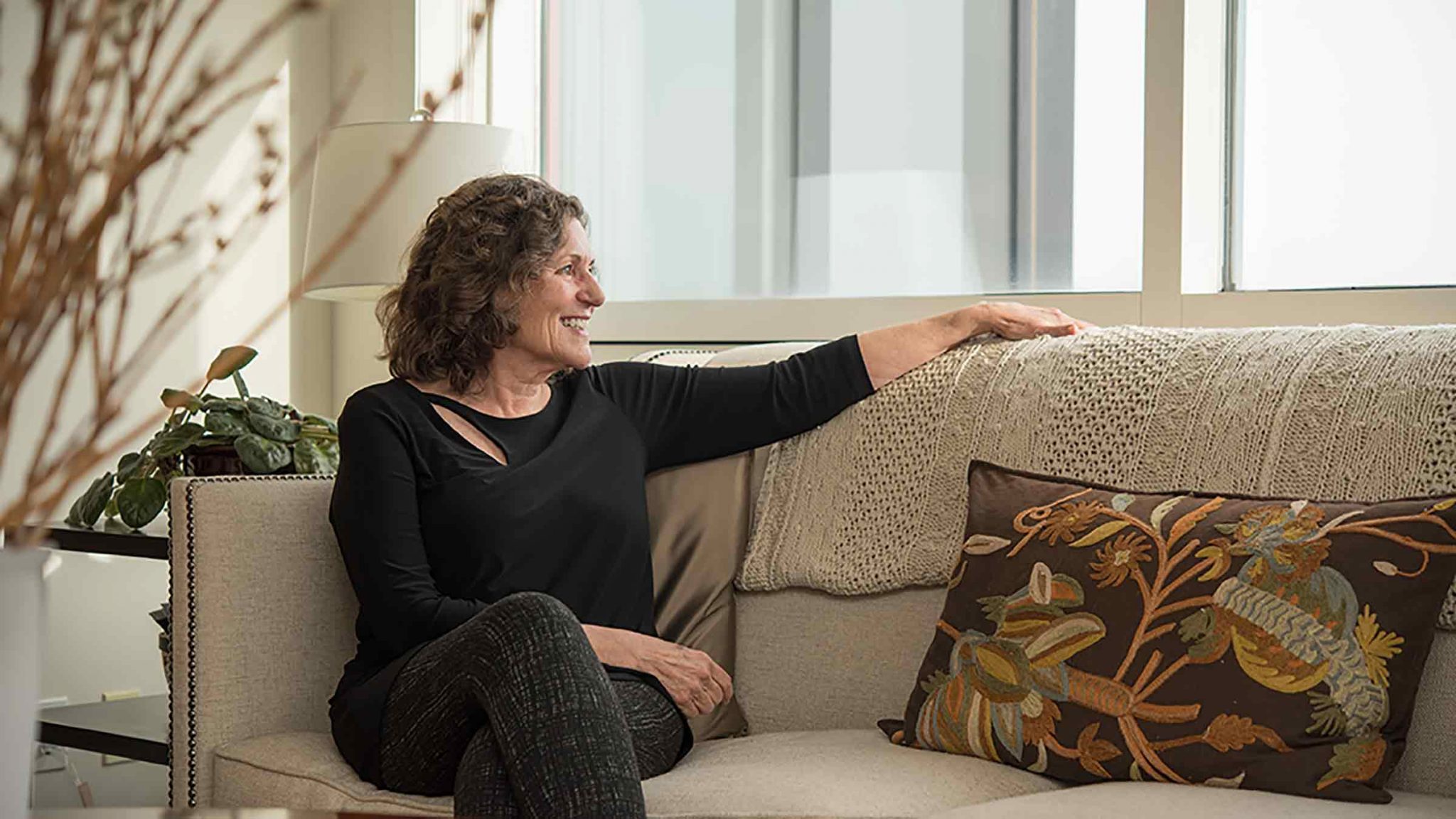My Story
By Rosalie Wosepka

Photo provided by CaringBridge
Our lives were ordinary. Raising three children, launching them into their own orbit, reinventing our marriage as the years flew by. We adjusted our work lives to include aging parents and new grandbabies. We lived in a bubble called “the good life” ... until it wasn’t.
Early Signs
I had always thought of myself as pragmatic and competent. When we got the first inkling that dementia was knocking at our door, we were shell-shocked, stricken, and bereft.
Reframing our future felt like climbing a mountain without the proper gear, training, or guide. John was initially diagnosed with Parkinson’s. He didn’t have tremors, but his balance and gait were affected. He shuffled his feet and leaned to the left.
Preparing and Learning
In this first stage, I tried to learn as much as I could about Parkinson’s. The terms “mild cognitive impairment” (MCI) and “dementia” were sprinkled into the conversations. We spent several years adrift with fluctuating diagnosis. I guess that is not so unusual. Eventually, REM sleep behavior disorder, visual spatial discrepancies, and delusions pointed us toward Lewy body dementia (LBD).
I learned that “dementia” is an umbrella term for different types of conditions, including Alzheimer’s, frontotemporal degeneration, vascular dementia, and others. It was hard to sort through all the information and not go down a rabbit hole. We worried about the genetic implications, the rate of decline, and the economic and emotional challenges. As a family, we split up the work of deciphering the treatment options, research studies, and family support. It was a scary, lonely time of recognizing our limitations.
For a time, we put this intruder “LBD” into the closet and lived our lives. We took advantage of a quiet reprieve to spend time with family, to live in a suspended time of hope that this was truly not happening. We relished the illusion of normalcy.
But of course, that only worked for awhile. We heard about a program called HABIT at Mayo Clinic, and we signed up. It was a two-week commitment, and it offered tools to help us navigate this challenge. It created a foundation for us. It helped.
Full-time Caregiving
Time was not our friend. As the second stage of caregiving took center stage, little by little, I became responsible for our finances, driving us to appointments and anywhere we needed to go, and the other day-to-day chores of living. I admit, I felt at times resentful, discouraged, and overwhelmed. I think that is when sadness became a constant companion, but not my only companion. John’s sadness was from experiencing the decline of his abilities; for me it was from witnessing his decline and feeling helpless to change the outcome. As time when on, our world became smaller. Some friends disappeared. Social gatherings became awkward and complicated.
My role as wife changed to care partner. Instead of interdependence, a new model arose. John became vulnerable. I felt I needed to protect him from harm. The challenge of navigating the health care system was a full-time job. Scheduling appointments, home-care services, physical therapy, occupational therapy, and speech therapy became my role. I struggled to carve time for myself. Luckily, I had access to a YMCA and to “walk and talk” friends. Even with strong family support, my health started to suffer.
Lewy body dementia presents with an array of manifestations: delusions, hallucinations, disturbed sleep patterns. They created a new dimension for us to manage. John’s confusion was at its peak at night, which caused sleeplessness for both of us. It took a big toll.
Getting More Help
The third stage really was activated by family intervention. Our children confronted reality and came to me, saying they didn’t want to lose both of us to LBD. I remember feeling tired and overwhelmed. I felt sadness, but also gratitude that it was time to look for a memory care center. I struggled with my feelings of inadequacy and guilt. Moving to a new normal was not easy, but it was necessary. I needed help.
My role changed from providing direct care to becoming John’s advocate. Hoping to form relationships in this new community, I listened to the new caregivers’ stories and shared stories about John. We forged a bond of mutual respect and appreciation.
John lived at the care center for fifteen months. Hospice was part of the team the last few weeks of his life. One of his caregivers was named “Comfort.”
The last stage for me as a caregiver was hanging up that shingle. I did not realize how much it had become my identity. It took a while for me to discover myself and to embrace the changes in me.